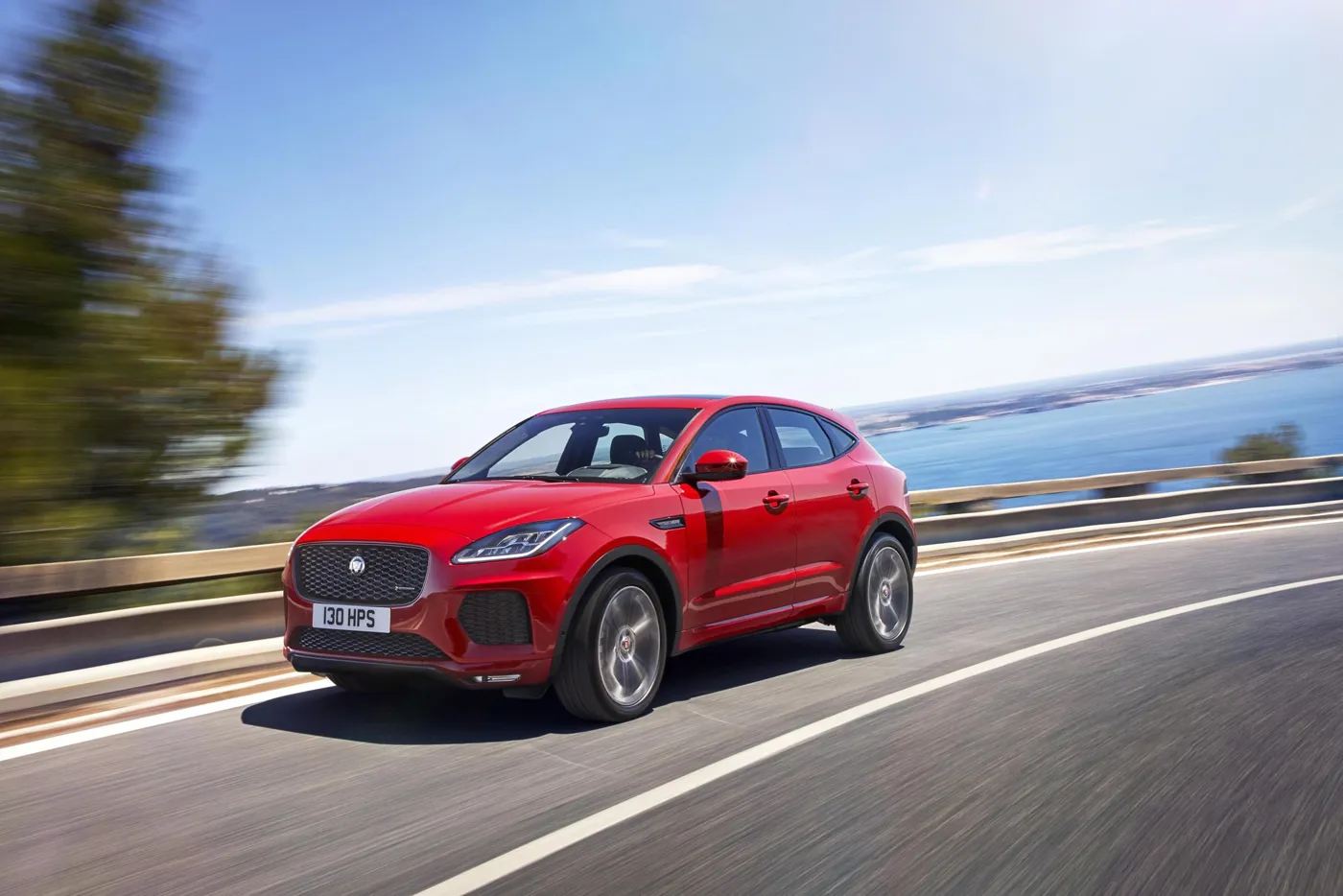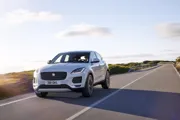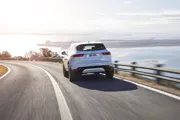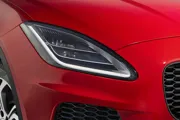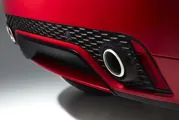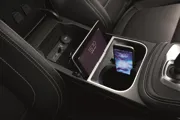Review
Jaguar is taking advantage of an insatiable appetite for crossovers and SUVs among car buyers by adding a second to its line-up ahead of the electric I-Pace next year.
The E-Pace is smaller than the F-Pace launched in 2016, but aims to offer customers more space and emotional appeal than an Audi Q3 or BMW X1. A single 2WD model will be offered in a range dominated by all-wheel drive variants, with a choice of four-cylinder petrol or diesel engines. Orders are open now for delivery in the autumn.
Exterior
The E-Pace design team, led by Jaguar design director Ian Callum, already had an SUV in the family on which to take cues. But the E-Pace is meant to appeal to a much younger demographic who might prefer a more engaging drive, so the styling also owes something to the F-Type sportscar. The headlamps are a similar shape to those of the F-Type rather than the wider, shallower F-Pace, while a line on the rear haunches mimics the curved rear quarter of the high-performance coupé and roadster.
Another reason for the headlamps to appear larger would be the fact that this is the smallest Jaguar model, and according to Callum, known internally as the ‘cub’. He says cubs are known for their disproportionately large eyes compared with adult animals, as well as oversized paws. Perhaps also a reason the E-Pace can be specified with 21-inch wheels.
There are two model lines, each available with S, SE and HSE equipment grades: standard and R-Dynamic, the latter having a slightly more aggressively styled front end.
Interior
Inspiration from the F-Type continues inside. The gear selector on automatic versions is a conventional stick rather than the rotary version found in Jaguar saloons and the F-Pace.
There’s also a grab handle on the passenger side of the centre console, like the F-Type, and part of what Jaguar calls a ‘wrap-around’ cockpit.
The E-Pace has a metal-effect trim finish inside to give it a more contemporary feel than wood.
All models come with a 10-inch touchscreen interface, reducing the number of switches needed on the dashboard, while the climate control functions are accessed via rotary dials.
R-Dynamic variants have a broader range of interior colour options than standard versions of the car, as well as sports seats and other design differences.
The 8.42-litre centre console compartment can house four large water bottles, as well as configurable cupholders and trays; the lockable glovebox is 10-litres, while the front door bins are 10.56-litres with 8.26-litres in the rear.
The E-Pace sits on a longer wheelbase than the Range Rover Evoque, with excellent rear leg room and headroom for a car measuring less than 4.4m in length, while the boot capacity ranges from a minimum 577 litres to a maximum of 1,234 litres.
Engines and transmissions
Three versions of the 2.0-litre Ingenium diesel engine are offered in the E-Pace, with the front-wheel drive manual offered as the only 150PS variant (D150).
A nine-speed automatic transmission is offered as an option over the standard six-speed manual on the D180, while the D240 bi-turbo diesel is automatic only, as are the two petrol versions, the P250 and P300, both using Jaguar’s new 2.0-litre Ingenium petrol engine.
The D150 offers CO2 emissions of 124g/km (and 60.1mpg on the NEDC combined cycle), with the all-wheel drive version of this variant, as well as the D180 AWD at 132g/km for six-speed manuals. Both D150 and D180 auto variants have CO2 emissions of 147g/km, with 162g/km for the D240.
The P250 and P300 have CO2 emissions of 174g/km and 181g/km respectively, making the P250 more tax efficient in pure BIK terms than the D240.
Technology and safety
All E-Pace models come with autonomous emergency braking with pedestrian detection, and there is a range of stability systems to ensure the driver remains in control in other situations where there is a risk of skidding, a trailer affecting the balance of the car or avoiding rolling when cornering severely in an emergency.
It is also available with a blindspot warning and lane-keeping assistance, front and rear cameras to aid visibility at junctions or when reversing to park, full parking assistance, and matrix LED headlights, although fixed LED headlights are standard.
The E-pace is offered with Jaguar’s InControl connectivity features, with optional 4G wifi connecting up to eight devices, and five USB charging ports.
Gesture tailgate opening, activity key wristband (where you can safely lock the main key inside the car should you be unable to carry it, for example while surfing or swimming), and advanced head-up display are also options.
The all-wheel drive system (where spedified) instantaneously varies the level of torque between the front and rear axles, depending on traction levels, while high-performance models gain a new system with a rear-wheel drive bias.
Prices
Prices will start at £28,500 on the road for the entry level D150 S, with R-Dynamic variants starting at £30,750, while a high-specification First Edition will be available at on D180 and P250 variants for the first year of production, priced from £47,800. A range-topping R-Dynamic P300 HSE is priced from £50,710.
Author:
Simon Harris
Specs
| Manufacturer | Jaguar |
| Model | E-PACE |
| Specification | E-PACE SUV 2.0d 150 DPFR SS €6 6Spd 18MY |
| Model Year | 0.00 |
| Annual VED (Road tax) | £0 |
| BIK List Price | £28,285 |
| CO2 | 124g/km |
| BIK Percentage | 29% |
| Insurance Group | N/A |
| CC | N/A |
| Fuel Type | Diesel |
| Vehicle Type | SUV and Crossover |
| Luggage capacity (Seats up) | 5litres |
Running Costs
| P11D | £28,285 |
| Insurance group | N/A |
| Fuel Type | Diesel |
| Cost per mile | 61.82ppm |
| Fuel | 8.74ppm |
| Depreciation | 50.05ppm |
| Service maintenance and repair | 3.03ppm |
Info at a glance
-
P11D Price
£28,285
-
MPG
60.1 -
CO2 Emissions
124g/km -
BIK %
29% -
Running cost
3 Year 60k : N/A 4 Year 80k : N/A -
Fuel Type
Diesel



